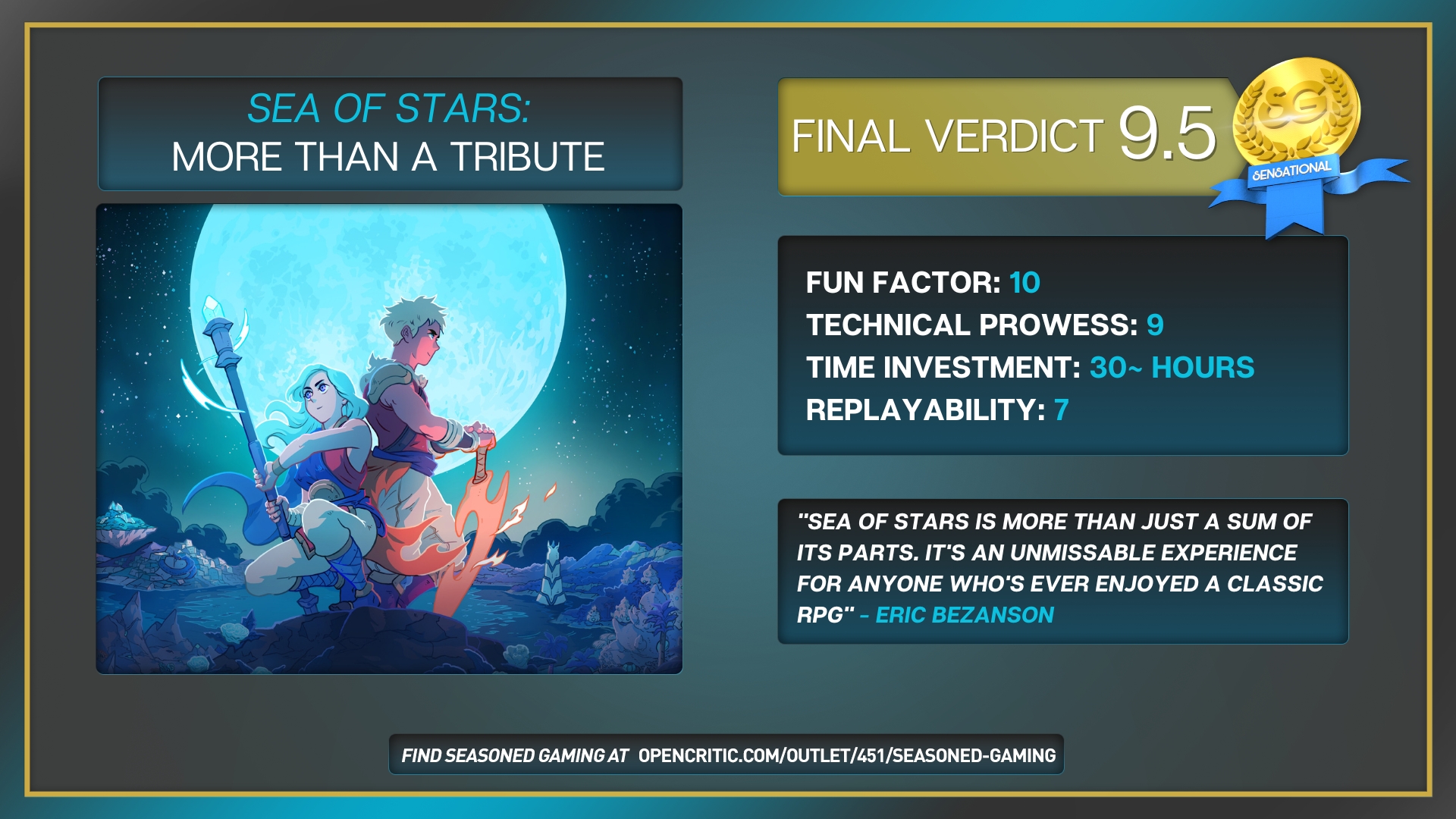The catalyst to any piece of creative work is inspiration. This is especially true when it comes to video games as a creative art form. While some developers opt to use past games beloved by many as a jumping off point to spawn an original idea, others orbit much closer to their inspiration, paying tribute to what came before. Flying so close to something as bright as the fond memories of games past is not without risk though. As expectations rise, and comparisons mount, a lot of pressure can get put on a team to pay proper respects to titles it’s a tribute to. Anything short of “great” and suddenly you will be faced with the wrath of everyone else who enjoyed those games as much as you did.
If there is one team that knows all about that it’s Sabotage Studio out of Quebec City, Canada. A studio which prides itself on creating “Retro-Inspired Indie Games”, having previously released The Messenger, which was a wonderful tribute to 8 and 16 bit classics Ninja Gaiden and Super Metroid. Despite the many comparisons to those older games, they were able to succeed by offering a fresh take on a familiar idea. Riding the success of The Messenger, Sabotage Studio are back with a brand new inspiration for their sophomore outing, Sea of Stars.
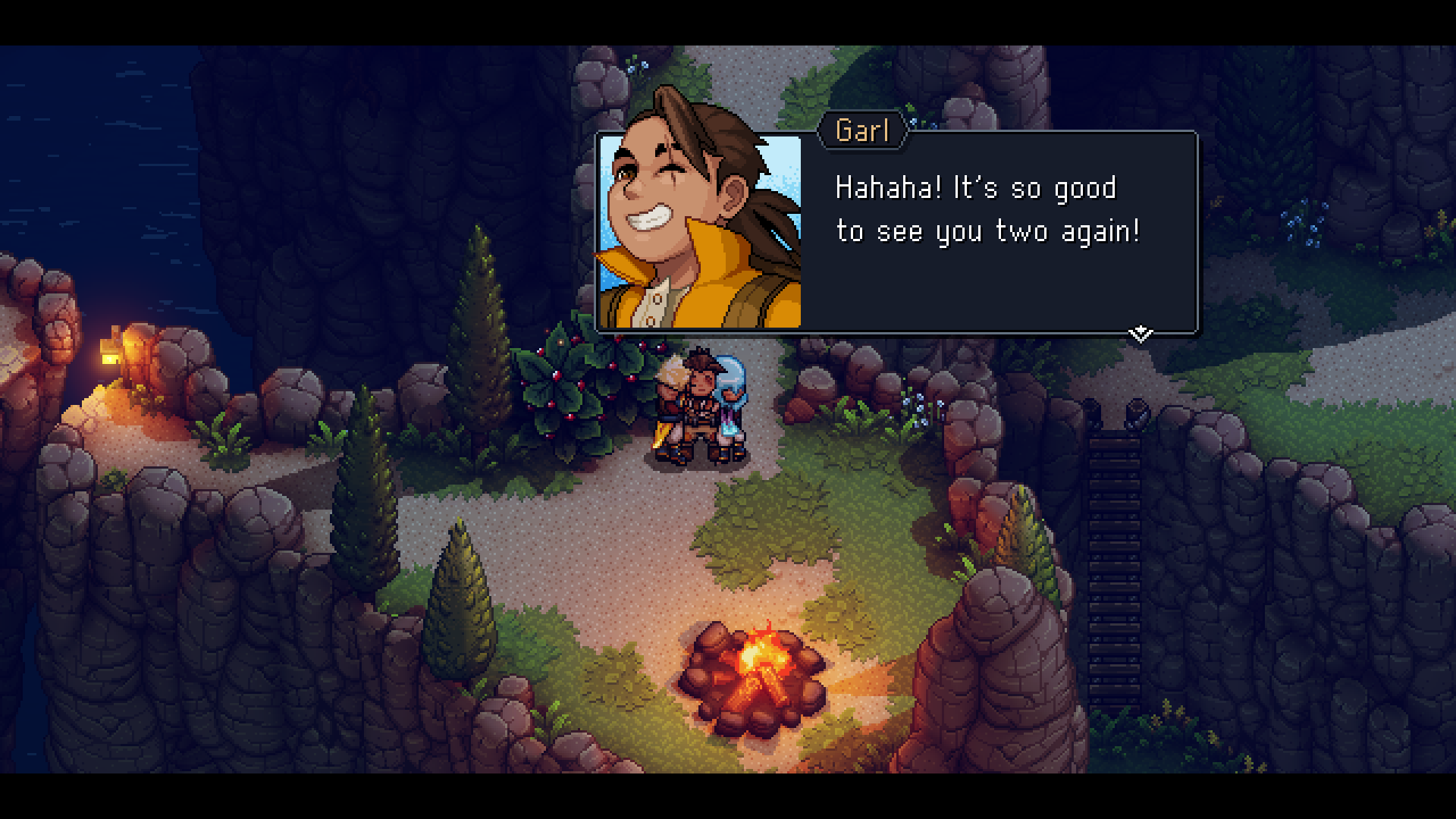
On paper the scale and scope of Sea of Stars is a clear level up from what the messenger was. This is perhaps not super surprising given the fact that Sea of Stars is not an action plat-former like its predecessor, but instead its much larger JRPG inspired adventure. On top of that, and I mean no disrespect to Ninja Gaiden or Metroid when I say this, they have really upped the ante with the games they decided to draw inspiration from this time. Games like Chrono Trigger and The Legend of Zelda: A Link to the Past are part of Sea of Stars DNA, which are some big shoes to fill. These are not just some of the best 16 bit adventure games, but some of the best games of all time.
Was Sabotage able to pull this off? Or did they perhaps fly too close to the sun by going up against the impossible expectations of fans of some of the greatest games ever made.
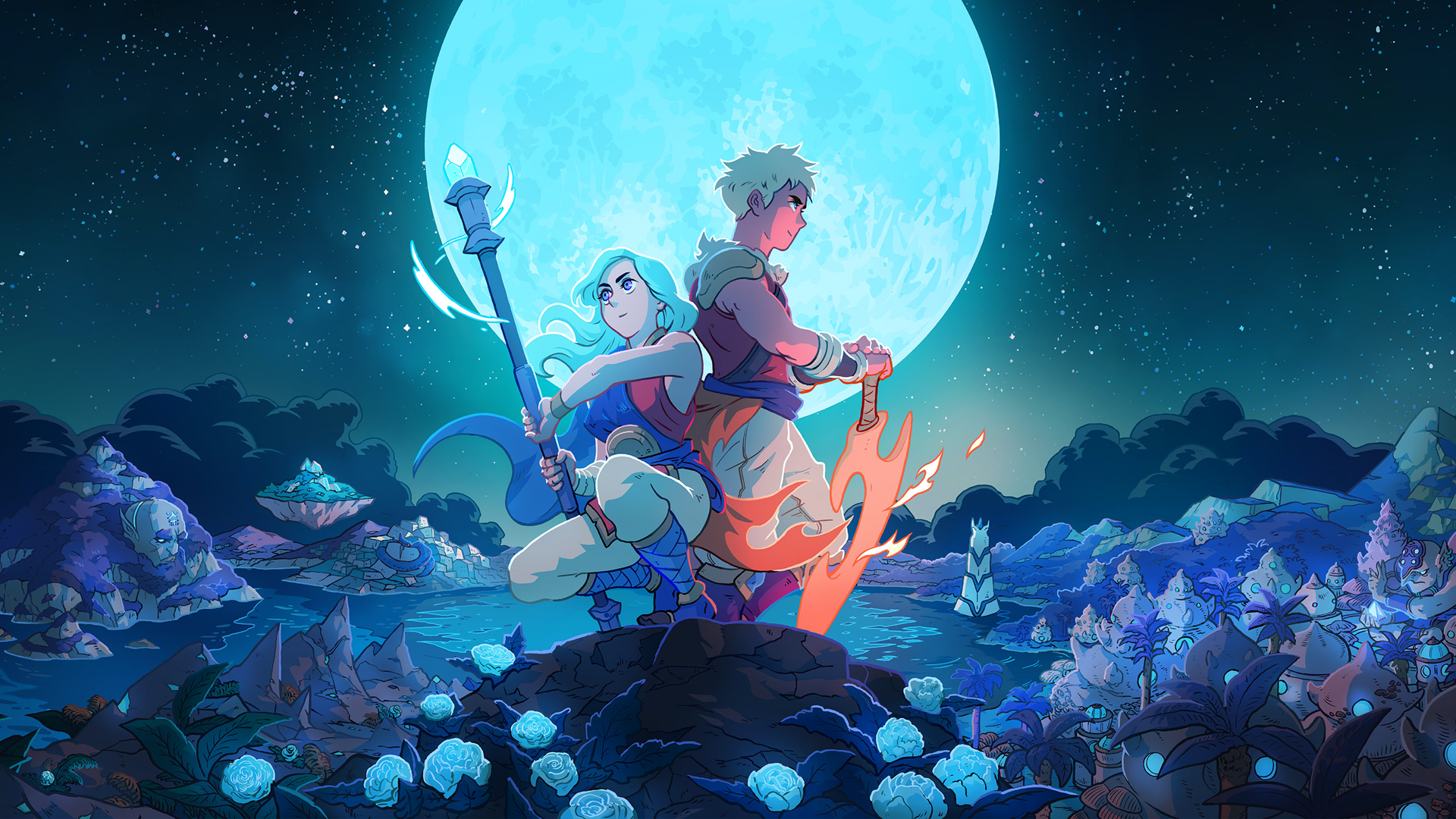
A Charming and Wholesome Adventure
In Sea of Stars you have the option of choosing between two protagonists, The Warrior Monk Valere and the Blade Dancer Zale. These two are Solstice Warriors born on both the Winter and Summer solstice respectively. Solstice warriors are sworn protectors of the world of Sea of Stars and do so by combining the power of the sun and moon to combat those that seek to destroy it.
I won’t go too deep into story details but choosing a protagonist is more so just selecting which character you will control while travelling across the game, as both Valere and Zale will make up your starting party and be together for the majority of the game. While they both do enough to stand on their own as real characters, they also pull double duty acting as the player avatar, making them just OK as characters. However, they won’t be alone on their journey to save the world as you will meet plenty of awesome characters along the way, Including Garl the Warrior Cook, who just might be the best new video game character in 2023 this side of Clive Rosfield.

The Story itself though is quite good, with the same humour and exuberance found in the Sabotages past game, The Messenger. There are some interesting twists and turns, as well as use of some cool narrative devices that made the game’s narrative quite fun to experience. While it may have much more in common with The Goonies then it does with The Godfather, this seafaring adventure was a charming, fun and heartfelt journey.
Pixel Perfect Presentation
Part of the reason why I had such a fun time with the game’s story and characters is definitely due to Sea of Stars’ gorgeous presentation. Sabotage has delivered some of the best pixel art I have ever seen. A large part of that is due to the level of detail and colour in every frame, however the use of full-on dynamic lighting really pushes this to the top tiers of 2D pixel art. The characters come to life with their dynamic and emotive portraits, reacting to the events transpiring around them. While some of the games biggest moments are enhanced by a very effective, yet sparing, use of animated cinematics. These cut scenes are very well done, especially ones found in the back half of the game, I sometimes just wish there were more.

The game is not just a visual feast though as it does not pull any punches on your ears either. Eric W Brown is back after having composed the great soundtrack found in The Messenger, however he has brought some backup this time around. Serving as a guest composer is the legendary Yasunori Mitsuda, of Chrono Trigger, and Xenoblade fame. Together they have put together a wonderful soundtrack that really sets the tone of the adventure. There is a tone of variety as each map has different tunes, even the battle theme changes depending on who you are fighting. All and all these tunes that I have not been able to stop humming since starting my play through, and likely will live with me long after.
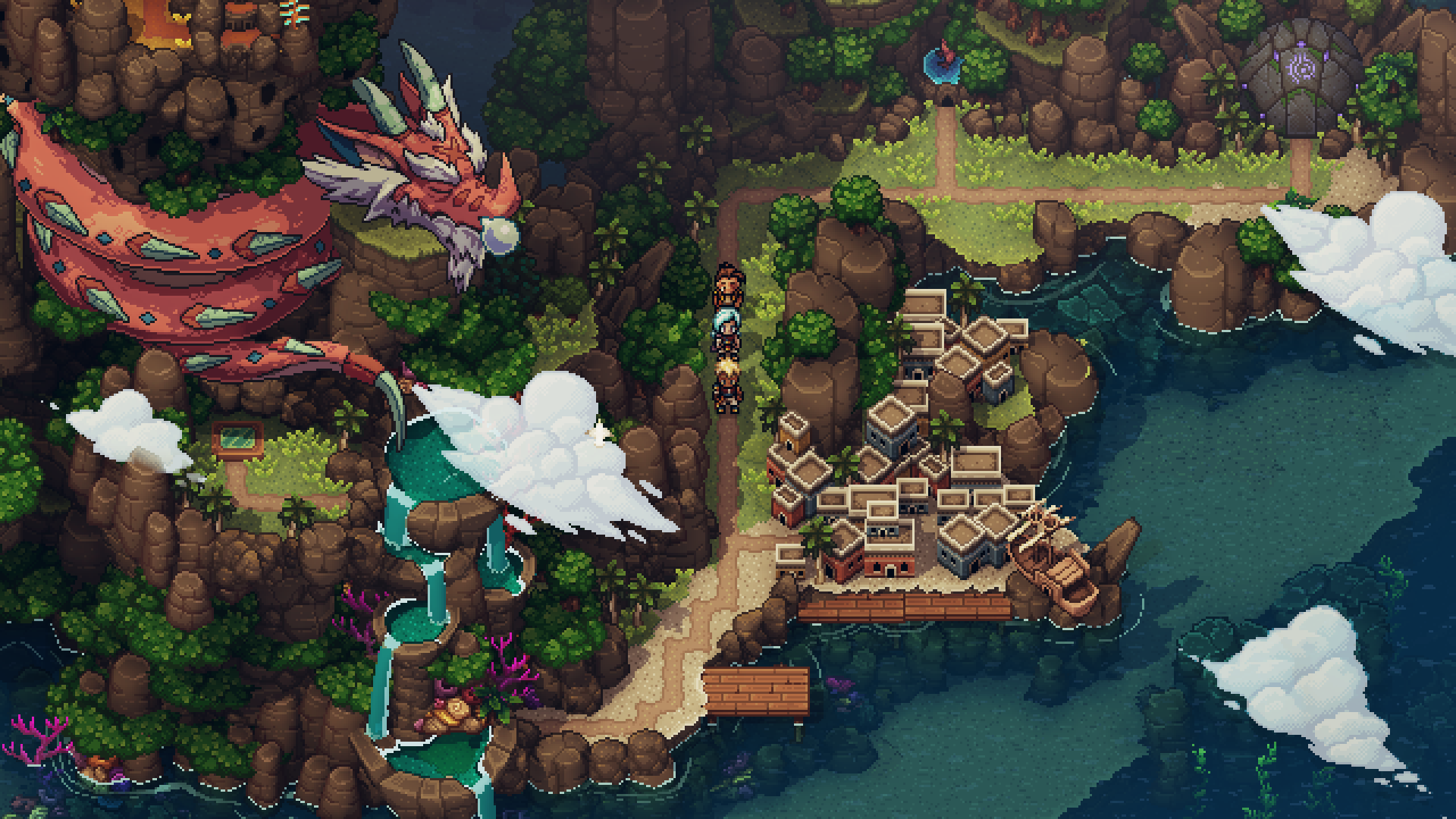
Combat without Compromises
While the audio visual package is quite impressive it is only setting the table for what really makes Sea of Stars shine, which is the game-play. I’ll admit, throughout my life I have not normally been a fan of a traditional JRPG combat system. In my opinion many of them suffered from four major problems. Turn-based combat always felt less engaging, random encounters and grinding would wear on me, combat would often break down to spamming your strongest attack and resource management was always a pain. So it’s safe to say I was a little worried heading into Sea of Stars, however Sabotage has thankfully found remedies for all of those issues resulting in some of the best JRPG combat I’ve seen in recent memory.

Up until this point the only classic JRPGs that I can say I’ve truly enjoyed the combat in are Super Mario RPG and the Paper Mario series, as they added additional timing mechanics to all of the abilities to make them feel more engaging. Sea of Stars borrows heavily from those principals, but improves the formula by offering some really fun mini games to a lot of the special abilities. One early example of this is Valeres “Moonerang” ability, where you throw a moon shaped boomerang at an enemy that bounces back to you after it hits them. Pressing the attack button again will bounce it right back to an additional enemy. This process will repeat upwards of 25 times, getting faster and faster with each hit. There is a clear relationship between your ability to master the mechanics of abilities and how much potential damage they can do. This makes every fight so much more engaging as failing these mini games can sometimes result in death.

You can be selective with your engagements though as there are absolutely no random encounters in Sea of Stars. In fact the developers have proudly boasted that the game requires no grinding either. While I did opt to take on most of the combat encounters presented to me, I never once felt that the answer to a difficult fight was grinding more. It always came down to mastery over the mechanics and strategy, which is exactly what I’m looking for in a game like this.

Especially since the combat puzzle Sea of Stars presents to you is so expertly crafted. Each character in your party has a different style of regular attack, such as bladed weapons or blunt weapons etc. They also have different damage affinities, be it fire, lunar, poison among others.. These affinities are often added to their special attacks for additional damage, especially when used against enemies who are weak to them. Of course every hero has that one ability that is stronger than the others, but it’s not as simple as just spamming the most powerful thing in your arsenal. Enemies will often have a set of icons above their head indicating a combination of different damage types you will need to hit them with before its their turn to attack next. If you can successfully solve this puzzle you will lock them from attacking and do bonus damage. This lock mechanic adds a lot more strategy to which attacks and abilities you choose to use and is often critical in boss fights.
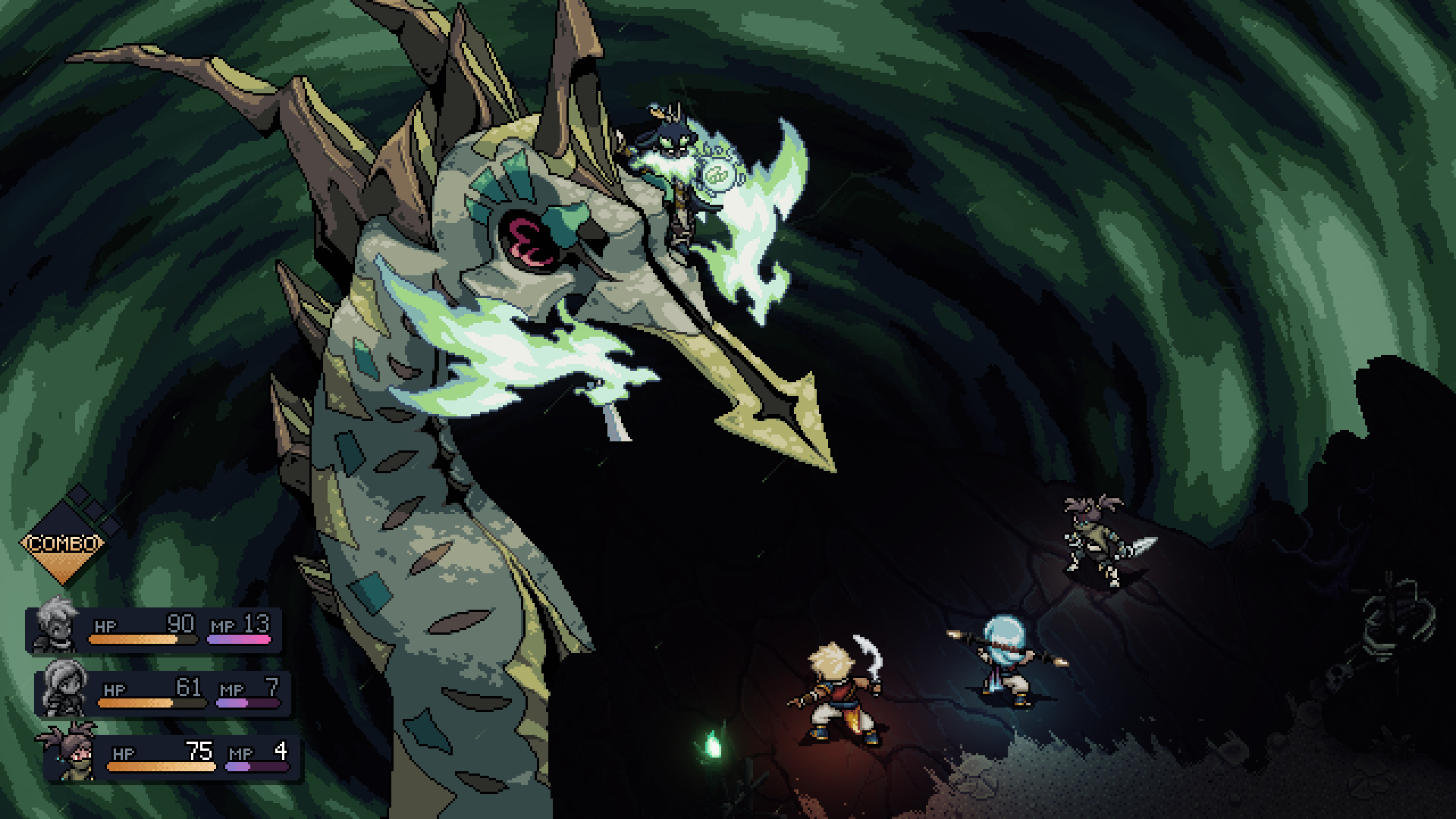
With all of those abilities you will be firing off to lock enemies out of their attacks, you will be spending a lot of resources. Thankfully the games approach here is also very well thought out. Abilities cost mana, attacking enemies with regular attacks generate mana. Regular attacks also leave orbs on the ground which can power up regular attacks by adding a magical affinity to them, meaning you don’t always need to use mana-based abilities to lock out enemies. Additionally all attacks, and successful blocks, will generate combo points which can be used to cast even more powerful “combo” spells without a mana cost. The whole circle of spending mana, gaining mana, and using combo abilities to fill in the gaps works wonderfully making each combat encounter a chess match with just the right amount of kinetic action with the timing mechanics.
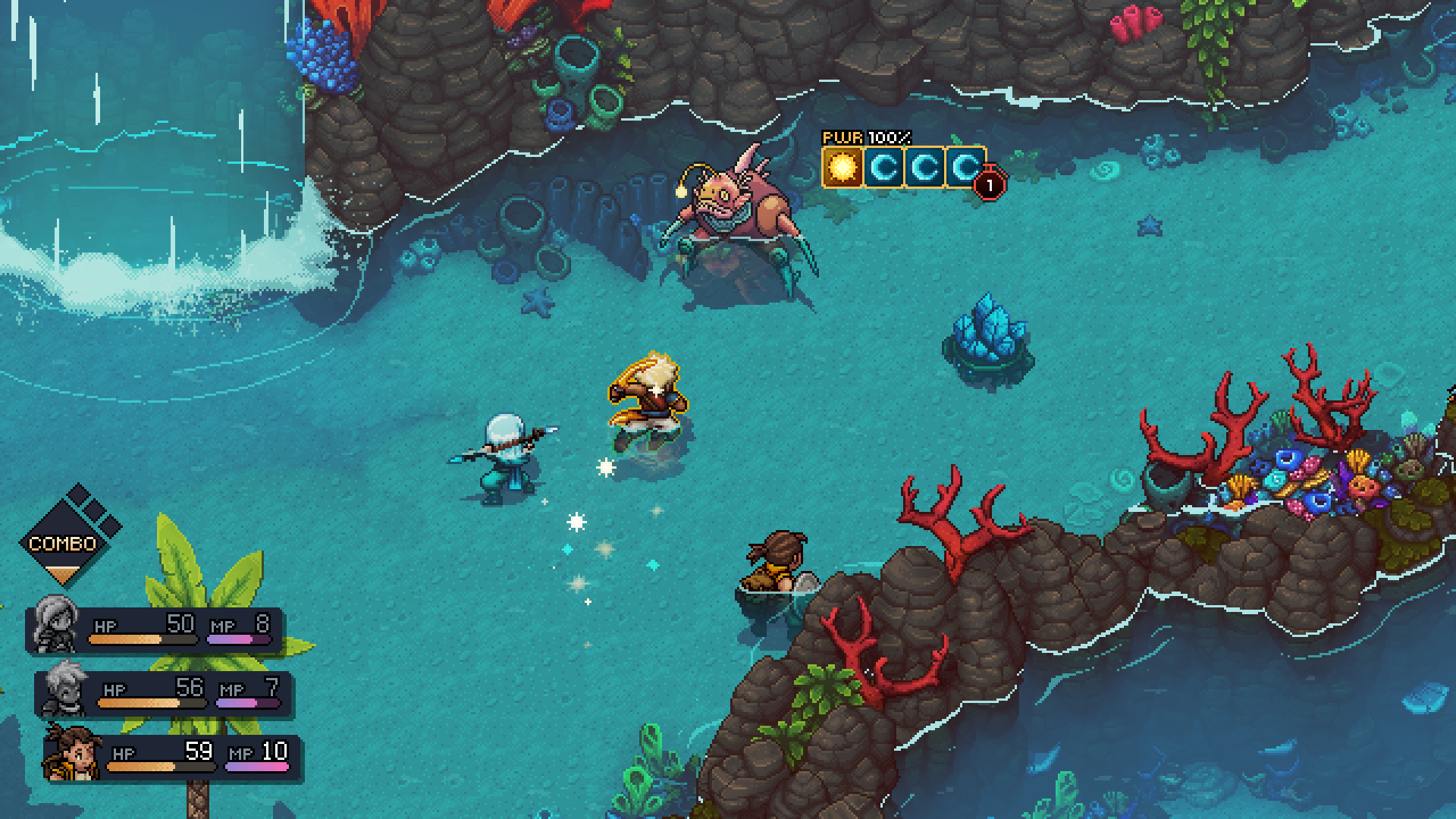
A Memorable Journey
The game is not just running from one fight to another though. Outside of the game’s many hub cities you will find yourself in several Zelda inspired dungeons. These are filled with tons of fun puzzles and unique mechanics. Also, Just like in Link to The Past, you will also unlock different tools to help traverse environments in new ways. This is in addition to the already large amount of traversal like jumping, swimming, climbing etc. All of this adds a nice sense of verticality to maps making them fun to explore. Which is something that I would encourage as there are a lot of item upgrades hidden away in the many nooks and crannies. While the game’s levelling systems are some what automatic and its gearing system is not necessarily that deep, being limited to a few simple slots, the power progression is definitely felt in combat when you acquire some upgrades.

Outside of the linear romp through the main story quest there are a ton of fun side activities you can engage in, such as the in universe Wheels game found in most taverns, fishing (of-course), cooking and other activities tied to key story elements I won’t spoil here. These side activities wont double your playtime or anything crazy but do a great job of fleshing out the world and providing some fun distractions.
Overall the game tells a fun and heartfelt story, Sea of Stars is more than just the sum of its parts. Which is saying something because, along with all of its great original ideas, its parts are made up of some of the best tributes I’ve ever seen to some of the best games I’ve ever played. An unmissable experience for anyone who’s ever enjoyed a 16/32 bit RPG.
You can find Seasoned Gaming’s review policy here

